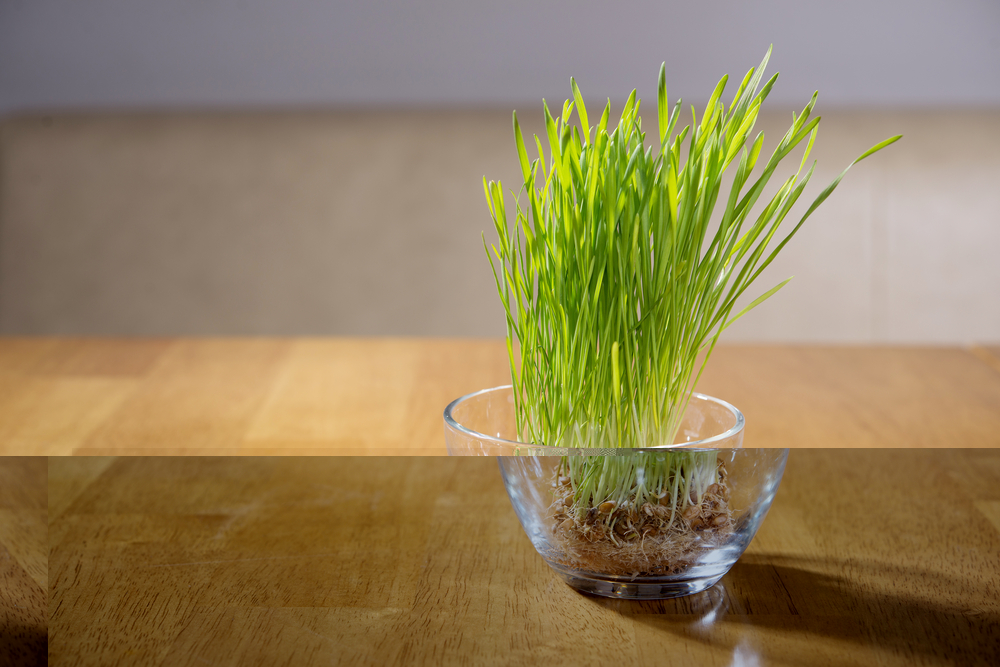Thanks to its many benefits, the wheatgrass juice is a real elixir of life and it will be valuable contribution to anyone’s diet.
The term “wheatgrass” refers to grass grown from wheat, but it can be also grown from barley, oats, and rye. The juice is obtained by squeezing the young grass rich in chlorophyll. This liquid gets dark green color and it is called wheatgrass juice. Today, the wheatgrass juice is well-known among health food professionals, nutritionists and other people with healthy lifestyles.
The pioneer of wheatgrass juice is considered Dr. Ann Wigmore. Thanks to her, people in the whole world can drink wheatgrass juice and enjoy its countless healing benefits. As a child, Dr. Ann learned about natural healing from her grandmother, who used plants, grasses, and herbs to heal soldiers injured in World War I. When, at age 50, she learned she had colon cancer, she turned to raw greens, blended seeds, and grains. Within a year, she was cancer-free. She began researching the healing properties of grasses, and soon settled on wheatgrass as her main focus.
Nutritional value of wheatgrass juice
Wheatgrass reaches its nutritional peak when it is about 18 cm in height and 7-10 days old. At this time wheatgrass has accumulated energy which will soon produce mass rapid growth and this energy will be transferred into juice. When wheatgrass is squeezed, quickly evaporates and oxidizes. Therefore it is important to drink it quickly or to freeze it to protect it from oxidation.
Wheatgrass juice is considered a complete food because of its nutrient-rich profile. It contains beta carotene and vitamins B, C, E, H, K, 90 different minerals and 19 amino acids. It contains more iron than spinach, more protein than meat, fish, eggs, beans or dairy products.
Wheatgrass juice is consisted of 70% chlorophyll and its chemical composition closely resembles hemoglobin. The chlorophyll is good for cleansing the liver, improving blood sugar and purifying the body of accumulated toxins.
Benefits of wheatgrass juice
Wheatgrass juice offers multiple benefits, including:
- Physical and psychological sense of well-being
- More energy and better sleep
- Stronger immune system
- Detoxification at the cellular level
- Better vision
- Beautiful skin and hair
- Fighting infections
- Cleansing and building up the blood
- Improving muscle mass and endurance
- Decreasing appetite and many more
Growing wheatgrass at home
Try to find high-quality wheat seeds or seeds of another grain mentioned above. Soak them in the water and let them stand overnight. Sprout the seeds in a sprouting jar for the next 16-24 hours rinsing them three times a day. After a short “tail” is visible, plant the seeds in a gardening tray with holes. The seeds should not be deep down in the soil but rather cover evenly with it. Water them regularly but not too much. After seven to eight days the grass will grow to 10-18 cm in height and it will be dark green. Then, you can cut the grass leaving 1 cm above the soil. The grass can be stored in a refrigerator for up to 7-14 days protected in plastic bag. If you want another batch of wheatgrass start the process all over again with new seeds and soil. Wheat is an annual seed so the first growth is the best. It will, however, grow back a second time but it will lose 50-75% of its nutritional value.
The wheatgrass juice can be consumed on a daily basis in small quantities. It is recommended to start with 30 ml a day on an empty stomach. Wheatgrass juice has a cleansing effect and may make your stomach upset if you start with too much. Then, you can slowly increase the dose or you can continue with the starting quantity. Thanks to its many benefits, the wheatgrass juice is a real elixir of life and it will be valuable contribution to anyone’s diet.

















